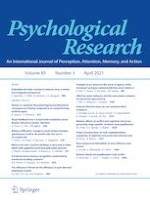01-04-2020 | Original Article
Attention allocation in pilots based on climbing and circling mission behavior
Gepubliceerd in: Psychological Research | Uitgave 3/2021
Log in om toegang te krijgenAbstract
Objective
Exploration of changes in eye movement at different flight conditions can enrich scholarly understanding of situation awareness (SA) and inform new scanning behavior training techniques for efficient and effective pilot education.
Background
The SA requirements for pilots vary from mission to mission. Eye tracking is often used to analyze various attention allocation and SA acquisition processes at work in different missions.
Methods
Pilot eye movements were measured during a climbing task and circling task using a cockpit-based simulator.
Results
Results of situation awareness rating technique (SART) tests show that there are significant differences between attention processes during climbing versus circling flight tasks. Fixation frequency during climbing is lower than in the circling task. Additionally, saccade frequency and average fixation time in the climbing task are markedly higher than those in the circling task. Wilcoxon test results show that the pilot has a higher fixation count and fixation time during the circling phase in out-view (OV) areas of interest (AOI) than during the climbing phase. Notably, the attention probability is higher in climbing task than in circling task when the current area of fixation (AOF) is in the head-up display (HUD) AOI and the next fixation area is in the instrumentation panel left (IPL); when the current AOF is in the out-view right (OVR) and the next AOF is HUD, the attention probability is higher in climbing task than in circling task; when the current fixation is in the IPL and the next fixation probability is to the out-view left (OVL), the attention probability is higher in task climbing task than in circling task. In terms of the Markov stationary distribution, the Wilcoxon test shows that, when IPL AOI is the area of the maximum probability of fixation in both tasks, the attention probability of HUD AOI and instrumentation panel right (IPR) is higher in climbing task than in circling task.
Conclusion
Circling tasks require efficient eye movement patterns accompanied by strict attention distribution, which yields high SA level and flight performance when performed properly.
Application
This paper summarizes the attention characteristics at different flight phases and various requirements of different tasks according to pilot eye movement tracking results. Similar activities, as routine training, can enhance the efficiency of a novice pilot’s attention distribution.
